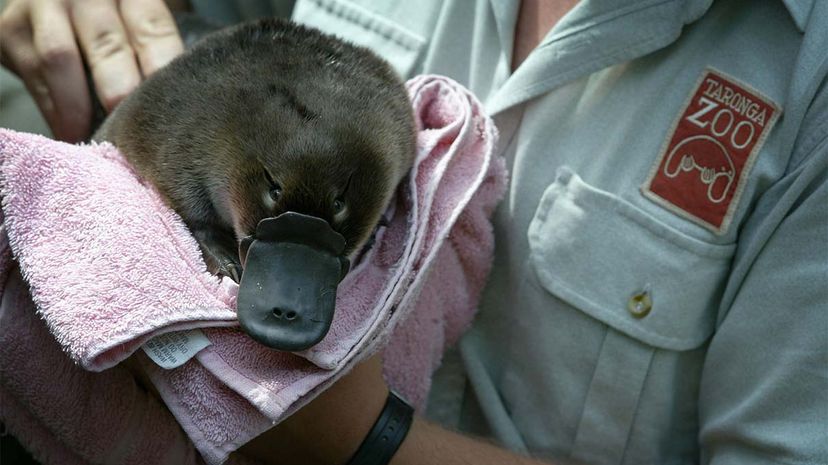
In the late 18th century, British zoologist George Shaw was asked to examine a specimen of a newly-discovered creature, fresh off the boat from Australia. He was one of the first scientists to clap eyes on the beaver-duck we call a platypus, and he understandably thought he was the butt of a practical joke.
"It naturally excites the idea of some deceptive preparation by artificial means," he wrote after examining the noble creature in 1799.
Advertisement
And it's not like the platypus's outlandish appearance is just a cover for an unremarkable physiology and life history. This egg-laying mammal chews its food with gravel because it lacks teeth — in fact, it doesn't even have a stomach, but an esophagus that connects directly to its intestines. The males have venomous spurs on their hind legs, they don't use their tails to steer or propel them through the water, but to store body fat, and their bills are so sensitive they can detect the electromagnetic fields radiated by other organisms, allowing them to swim with their ears, eyes and nose closed.
But listen, it gets weirder. Although platypuses (yes, you can also say platypi and platypodes, if you want) nurse their young, they don't have nipples, so the milk just sort of oozes out of their mammary glands and the babies lap it up off their mother's fur. And if you think that might be a bit unsanitary, especially for an animal that swims around in farm ponds all day, you'd be right. But don't worry — platypus evolution came up with a solution to the problem of bacteria. A 2014 study found that, while all mammals' milk has antibacterial properties, platypus milk seems to have very special antimicrobial powers.
A new study published March 14, 2018 in the journal Structural Biology Communications reports that the biochemical reason for the special bug-busting properties of platypus milk is predictably weird: It contains a protein with a unique and previously unknown structure that might be key in fighting bacteria that have become resistant to antibiotics.
What makes this monotreme lactation protein (MLP) so strange is its shape: Its folds form tight ringlets, which is why it was christened the "Shirley Temple" protein after the iconic hair of the child star. The research team managed to recreate the MLP in the lab, purify it, crystallize it and use X-rays to determine its 3D structure at the atomic level — a structure that has never been seen in any of the 100,000 proteins discovered to date.
"The most exciting thing for me was to see a protein shape that had never been seen before," lead author Janet Newman, a researcher at CSIRO, says in an email. "It's like being a florist and seeing a completely new flower."
So, how could this fancy new antibacterial protein be used to fight superbugs? According to Newman, the research team plans to begin by figuring out the relationship between the extra-curly form of the protein and its bacteria-killing powers.
"In theory there are a number of approaches — we could tweak the structure a little by making site-directed mutants of the protein in the lab," says Newman. "This would allow us to see how the activity changes each time, until we build up an understanding of the mechanism of how this works. Or maybe we could use some form of the protein to try to isolate its binding partner on the bacterium, which might be some structure on the outside of the bacterium."
According to the World Health Organization (WHO), antibiotic-resistant bacterial infections are becoming a serious threat to public health worldwide. The heavy use of antibiotics in intensive animal farming, as well as overuse in human hospitals, has led to the rise and spread of these heavy-duty microbes. Diseases like salmonella, pneumonia, tuberculosis and gonorrhoea — all once easily treated with antibiotics — are becoming less responsive to the drugs used to treat them. In 2014, WHO warned that we may be approaching a "post-antibiotic era," wherein antibiotics will no longer be effective in fighting infection. This would make everything from childbirth to organ transplants very difficult. Again.
But maybe platypus milk can help. It's (predictably) so crazy it just might work.
Advertisement


